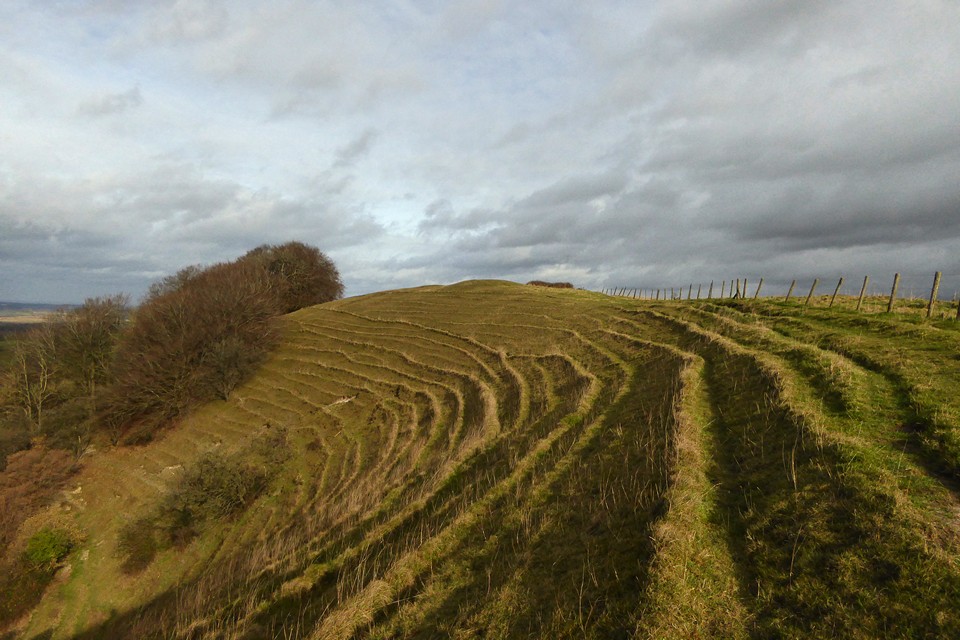This place is totally mad. It’s impossible for me to take photos that describe it. That’s because for one thing, there are these mad ‘earthworks’ – they’re not really earthworks, they’re dry chalk valleys. But from some angles you’d think you were looking at a hill fort with snakey defence ditches. Secondly, once you’ve climbed up to the top, the slope drops off in an insanely steep way, very suddenly. And thirdly, you are confronted with the most enormous view. From the vantage point of the round barrow on the crest, you have a 360 degree view – one way out to the north and west out over the steep slope and away to goodness knows where (I felt like I should be able to see the glitter of the sea, but that’s a bit too much) – but with a quite different feel to the south and east, which has that vast minimalist curveyness like the Salisbury Plain.
The long barrow is barely perceptible, but you just think: what on earth is it doing where it is? You had that view and you stick it there? Clearly the builders’ priorities were different from mine. Surely it is knowingly near the Edge but yet deliberately not near enough to see the view. A liminal spot but not on the distracting boundary. I don’t know. I’d love to know what others would think.
Having footled about for a bit I sat for a while looking out in the late afternoon sun. There’s Heddington church at the bottom of the hill but a place like this has surely always to have been better for thinking about stuff.
(I left the car backed up to a tree near a barn at SU010656. This is the old Bath-London coach road – you can rather imagine it when you know? Then I walked back and through a squeaky gate near the sign ‘dogs to be kept on lead’ (not the track through the open gate to the sign’s right). This side of the fence is open access land with a little on the other side of the sunken lane. Then it’s not too badly uphill a walk for long, just rough grassland underfoot, though don’t go too near the water trough or the reservoir, as the ground’s craftily boggy :) Aim for the corner and the world opens up in front of you).






































































































































